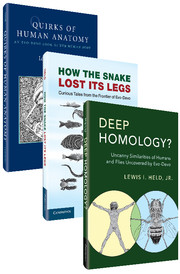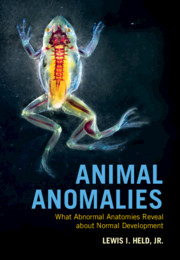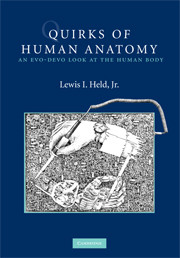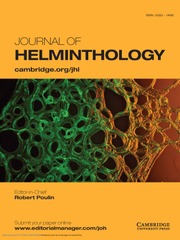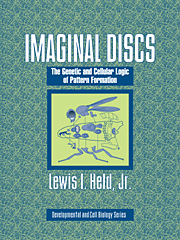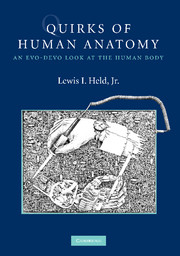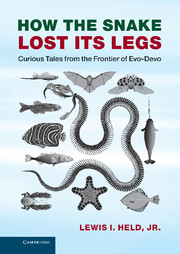Deep Homology?
Uncanny Similarities of Humans and Flies Uncovered by Evo-Devo
$93.00 (C)
- Author: Lewis I. Held, Jr, Texas Tech University
- Date Published: April 2017
- availability: Available
- format: Hardback
- isbn: 9781107147188
$
93.00
(C)
Hardback
Other available formats:
Paperback, eBook
Looking for an examination copy?
If you are interested in the title for your course we can consider offering an examination copy. To register your interest please contact [email protected] providing details of the course you are teaching.
-
Humans and flies look nothing alike, yet their genetic circuits are remarkably similar. Here, Lewis I. Held, Jr compares the genetics and development of the two to review the evidence for deep homology, the biggest discovery from the emerging field of evolutionary developmental biology. Remnants of the operating system of our hypothetical common ancestor 600 million years ago are compared in chapters arranged by region of the body, from the nervous system, limbs and heart, to vision, hearing and smell. Concept maps provide a clear understanding of the complex subjects addressed, while encyclopaedic tables offer comprehensive inventories of genetic information. Written in an engaging style with a reference section listing thousands of relevant publications, this is a vital resource for scientific researchers, and graduate and undergraduate students.
Read more- Puzzle boxes provide questions that students can use as a springboard for dissertation research
- Strong focus is placed on congenital disease of humans, giving the book a clinical relevance for medical professionals
- An emphasis is placed on general concepts, while focusing on concrete case studies, illustrating general principles with specific examples and preventing the reader from becoming lost in abstract explanations
Reviews & endorsements
'The book is a great learning tool and valuable resource for students and researchers in the field of developmental genetics and evolutionary biology. The author, himself an expert in Drosophila development, gives an in depth overview of the research into how genes control the processes by which simple embryos turn into complex organisms. He draws out in a clear and concise manner the parallels that unite all animals in regard to developmental mechanisms and the underlying gene networks. The way it is conceived the book follows a novel and highly original approach, by directly drawing comparisons between known gene functions and mutant phenotypes in fruit flies and clinical syndromes caused by mutations in homologous genes in humans. As a result, Deep Homology? … will be a relevant and inspiring read for a broad readership interested in the biological underpinnings of human health and disease.' Volker Hartenstein, University of California, Los Angeles
See more reviews'Deep Homology? explores a deep truth. There is a kinship between human bodies and the bodies of flies. Way down at the level of the genes, our family likenesses are incredibly intricate, interesting, and instructive. To trace these resemblances is to discover (among other things) the ghostly image of our lost common ancestor, which lived six hundred million years ago. Lewis Held, Jr lays out all of the details, the nuts and bolts of what we know and what we don't, with great charm and enthusiasm. The picture is complex. It is also beautifully simple, as William Blake understood when he wrote 'The Fly.' 'Am not I /a fly like thee? /Or art not thou /a fly like me?' Jonathan Weiner, Author of Time, Love, Memory
‘Rarely has a technical concept been brought so vividly to life as 'deep homology' is in Lewis I. Held, Jr’s most recent Devo-Evo manifesto. Deep homology is real, as real as the bilaterian ancestor was alive some 600Mio years ago, that is the conclusion of this eminently readable, informative and entertaining book.’ Gunter Wagner, Yale University, Connecticut
'… fun and informative.' Christopher J. Percival, Evolutionary Anthropology
'Held is an honest, excited, and entertaining writer … [he] has delivered an essay that can be a valuable tool for future evo-devotees seeking to probe the deepest dark depths of deep homology. His work has cataloged and organized the key works of the field and the brains that were behind them. It has outlined the questions that still perplex us - and some of the directions we must go to refine our answers.' David M. Linz and Armin P. Moczek, Evolution and Development
'… this is a valuable reference work. That said, it is not a long book, more a monograph, but it is densely packed with information and discussion. I found it surprisingly accessible, despite the state-of-the-art content.' Les Rose, The Biologist
‘I am a major fan of Lewis I. Held’s evo-devo books. In each I’ve encountered material that pushes me to, and sometimes over, the edge of my own understanding – but to me, that’s what education is all about. Reading them and using them in my classes, I felt privileged to benefit from the insights of a scholar seriously devoted to his own teaching.’ Mark Terry, American Biology Teacher
Customer reviews
Not yet reviewed
Be the first to review
Review was not posted due to profanity
×Product details
- Date Published: April 2017
- format: Hardback
- isbn: 9781107147188
- length: 290 pages
- dimensions: 254 x 180 x 17 mm
- weight: 0.74kg
- contains: 27 b/w illus. 45 tables
- availability: Available
Table of Contents
1. Body axes
2. Nervous system
3. Vision
4. Touch and hearing
5. Smell and taste
6. Limbs
7. Heart.
Sorry, this resource is locked
Please register or sign in to request access. If you are having problems accessing these resources please email [email protected]
Register Sign in» Proceed
You are now leaving the Cambridge University Press website. Your eBook purchase and download will be completed by our partner www.ebooks.com. Please see the permission section of the www.ebooks.com catalogue page for details of the print & copy limits on our eBooks.
Continue ×Are you sure you want to delete your account?
This cannot be undone.
Thank you for your feedback which will help us improve our service.
If you requested a response, we will make sure to get back to you shortly.
×

